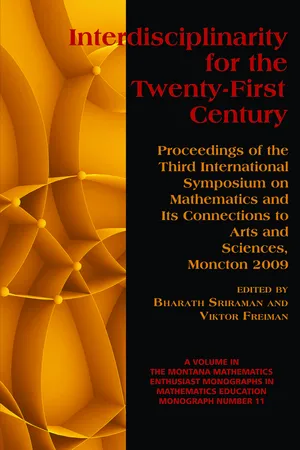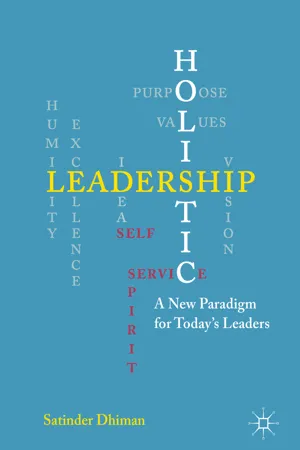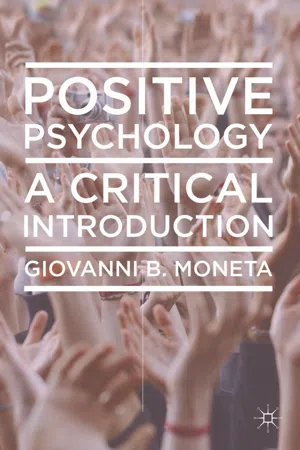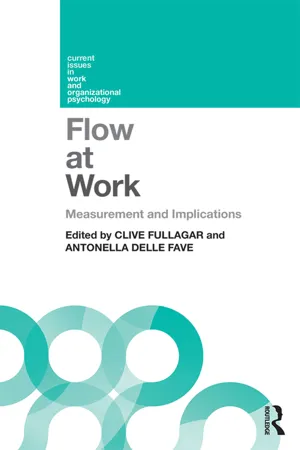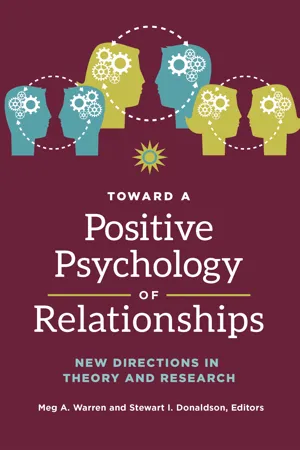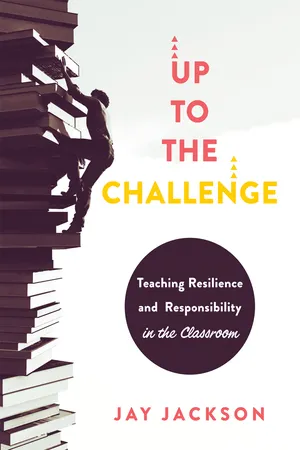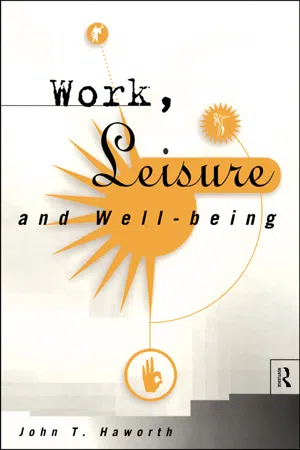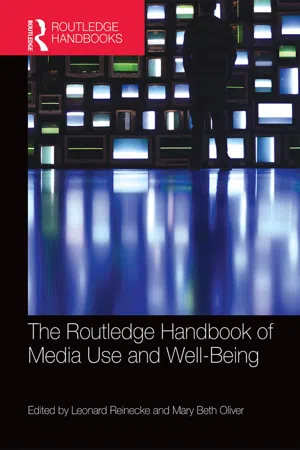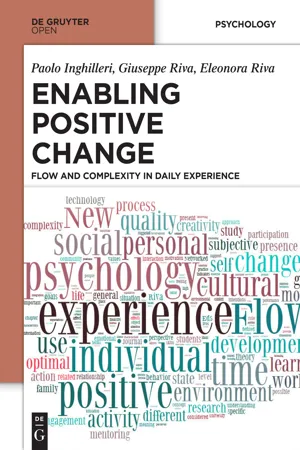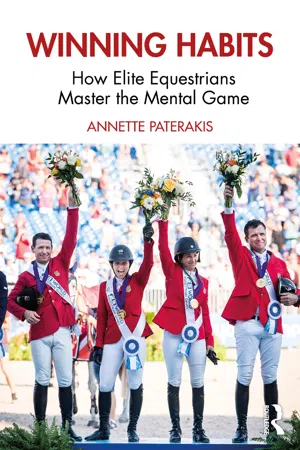Psychology
Flow
Flow refers to a state of complete absorption and focus in an activity, where individuals experience a sense of energized focus, full involvement, and enjoyment. It is characterized by a deep sense of concentration, effortless action, and a loss of self-consciousness. Flow is often associated with optimal performance and a feeling of being in the zone.
Written by Perlego with AI-assistance
Related key terms
1 of 5
12 Key excerpts on "Flow"
- eBook - PDF
- Bharath Sriraman, Viktor Freiman(Authors)
- 2010(Publication Date)
- Information Age Publishing(Publisher)
Teachers might then direct students to deal efficiently with their emotional experiences, to use these in guiding students’ thoughts and behaviors, and moreover in steer-ing students toward favorable conditions leading to positive emotional experiences. One such positive experience is the Flow experience. Csikszentmihalyi (1975) developed Flow theory, a theoretical account of the experiences of intrinsically motivated individuals who choose to engage in an activity for its own sake. Flow is “defined as a psychological state in which the person feels simultaneously cognitive efficient, motivated, and happy” (Moneta & Csikszentmihalyi, 1996, p. 277). According to Csikszentmihalyi (1975, 1990) the following dimensions characterize the Flow experience: chal-lenge-skill balance, clear goals, immediate feedback, intense and focused concentration, merging of action and awareness, perception of control, altered perception of time, intrinsic reward, loss of self-consciousness. Central to the state of Flow is the fragile balance between the personal capabilities and the perceived challenges of a task. If challenges exceed personal skills, the individual could experience anxiety; respectively, if personal skills exceed challenges, then the individual might become bored. Experiencing either anxiety or boredom pushes the individual to regulate his or her level of challenge or skill in order to escape the two unpleasant states and re-enter a state of Flow. Experiencing Flow could encourage the individual to persevere in an activity because of the rewards it possesses. In a state of Flow, the individual’s feelings, thoughts, wishes, and actions are well balanced. This state induces in the individual the desire to replicate the Flow experience. But deeper than the wish to repeat the Flow experience is the enjoyment, the satisfaction, and accom-plishment the Flow experience brings (Seifert & Hedderson, 2009). - eBook - ePub
- Arne Dietrich(Author)
- 2015(Publication Date)
- Palgrave Macmillan(Publisher)
Ask any athlete or artist about Flow experiences, and you will be treated to sound bites about time flying by, ecstatic experiences, being lost in the moment, and spontaneous joy, never mind the best job they have ever done. Flow is a common experience and the concept is intuitively appealing. For those who haven’t come under its spell, here is a short description. Flow is a highly attentive state of consciousness characterized by effortless, fluid, and graceful action. A Flow experience ensues when one becomes so deeply focused on a task and pursues it with such passion that all else disappears, including the passage of time, worry of failure, or the sense of authorship. The person enters a tunnel, an almost euphoric state of bliss, in which the task at hand is performed, without strain or effort, to the best of the person’s ability (Dietrich, 2007a). According to the psychologist Mihaly Csikszentmihalyi (1996), the high priest of the Flow state, any activity can produce Flow as long as it is a challenging task that demands intense concentration and commitment, contains clear goals, provides immediate feedback, and is perfectly matched to the person’s skill level.The topic of optimal human functioning has a long history in humanistic and health psychology. In the 1940s, the psychologist Abraham Maslow called such memorable moments of self-actualization peak experiences and described them as being filled with happiness, fulfillment, and achievement that create a feeling of realizing one’s human potential. Some say that Flow – if not an altered state – is at the very least a special state of consciousness. To be sure, a shortlist of key phenomenological features includes the usual suspects. People invariably report the typical one-pointedness of mind, the mental singularity that occurs when the muscle of attention is flexed and a single event becomes the exclusive content of consciousness. Activities in Flow are done for their own sake, the ego takes a leave of absence, and distractions are eliminated from awareness, especially complex, meta-analytical processes such as self-reflection, worry of failure, or fantasies of success. Time loses its meaning, and one becomes so immersed in the task that the here and now is the only realm of existence. The Flow experience, you understand, is not limited to musicians, painters, or freestyle skiers. It can also occur, and regularly does, in unsung activities like house cleaning, garbage collecting, or on-the-fly lying about your whereabouts. Total immersion by itself alone isn’t enough. Being absorbed in watching a movie or reading a gripping novel doesn’t count. The essence of Flow is the merging of perception and action, the smooth, rapid-fire integration of sensory input and motor output that cleanly bypasses the centers of higher thought and consciousness. That’s why meditation, for instance, isn’t a Flow state. It doesn’t include a skilled movement sequence. - eBook - PDF
Holistic Leadership
A New Paradigm for Today's Leaders
- Satinder Dhiman(Author)
- 2017(Publication Date)
- Palgrave Macmillan(Publisher)
38 The discoveries from these studies profoundly changed the way we look at peak performance and workplace engagement and fulfillment. According to Csikszentmihalyi, Flow refers to a state of total immersion, effortless concentration, and rapt enjoyment in an activity in which one loses any sense of space, time, and self. First proposed by Csikszentmihalyi, Flow is the mental state of operation in which the person is fully immersed in what he or she is doing, characterized by a feeling of energized focus, full involvement, and success in the process of the activity. It is marked by a certain delightful effortlessness borne of complete identification with the task at hand. Flow & HAPPINESS: IMPLICATIONS FOR LEADERS Why do leaders need to study the art and science of Flow and happiness? What is the link between Flow and creativity? What is the link between hap- piness at work and workplace success and well-being? We believe knowing answers to these questions is vital for leaders today, given the fact that majority of US workers are not engaged at work, as indicated by a series of recent Gallup polls. 39 As Steven Kotler put it: “Flow directly correlates to happiness at work and happiness at work directly correlates to success.” 40 Creativity triggers Flow and Flow strengthens creativity. Studies show that there is direct link between happiness and business outcomes. According to Shawn Achor, who has researched extensively in 38 See “Flow States: Answers To The Three Most Common Questions About Optimal Performance,” Retrieved February 18, 2016: http://www.forbes.com/sites/stevenkot- ler/2014/02/09/Flow-states-answers-to-the-three-most-common-questions-about-opti- mal-performance/#5a396e953d1533fc83393d15. 39 Recent Gallup polls have indicated that 71 percent of US workers were “not engaged”, or “actively disengaged” from their jobs. See Gallup Report: “70 % of US workers not engaged at work.” State of the American Workplace. - eBook - ePub
Positive Psychology
A Critical Introduction
- Giovanni Moneta(Author)
- 2013(Publication Date)
- Bloomsbury Academic(Publisher)
Flow the simultaneous enactment of these six themes, and set out to search for its origins and consequences.Flow is a state of profound task-absorption, enhanced cognitive efficiency, and deep intrinsic enjoyment that makes a person feel one with the activity. To put it simply, Flow is fun, as any everyday life activity – whether it is socially defined as ‘work’ or ‘leisure’ – can lead to Flow; so that, if we find Flow recurrently in daily activities we will live a more enjoyable and fulfilling life.Yet, is Flow any good other than for providing enjoyment and inner fulfilment? Thirty years after introducing the concept of Flow, Csikszentmihalyi (1996) interviewed 91 outstanding individuals in the fields of science, business, and the arts, and asked them to report their experience prior to conceiving novel ideas and seeing them recognized by peers as major innovations. Intense and recurrent Flow in work emerged as the main theme underlying each innovation.Flow Theory states that Flow has a direct impact on subjective well-being by promoting the experience of happiness in the here and now (Csikszentmihalyi, 1982). Moreover, the theory states that Flow has a long-lasting indirect effect on subjective well-being in that it motivates a person to face and master increasingly difficult tasks, thus promoting lifelong organismic growth (Csikszentmihalyi, 1990). Therefore, Flow Theory constitutes a synthesis of hedonic and eudaimonic approaches to subjective well-being, and has the potential to allow for the quadrature of the circle, that is, for enabling to construct a life that combines enjoyment, fulfilment, and achievement with happiness.In terms of its relationships with other constructs in the field of positive psychology, Flow is everywhere and nowhere, so to speak. The concept of Flow is related to the concept of intrinsic motivation, which we reviewed in Chapter 3 (section Intrinsic Motivation, Extrinsic Motivation, and Self-Determination) and Chapter 4 (section Trait Intrinsic and Extrinsic Motivation - eBook - ePub
Flow at Work
Measurement and Implications
- Clive Fullagar, Antonella Delle Fave(Authors)
- 2017(Publication Date)
- Routledge(Publisher)
Flow in the Context of Industrial and Organizational Psychology The case of work motivationPatrick Knight and Christopher WaplesFlow is a subjective state experienced when individuals are completely absorbed in an enjoyable activity. It comprises an exclusive, intense concentration on the task at hand, and subsequent enhancement of subjective experience (Csikszentmihalyi, 1975). Although limited, there is evidence that Flow may be associated with positive organizational outcomes (Eisenberger, Jones, Stinglhamber, Shanock, & Randall, 2005) and work performance (Demerouti, 2006). As evidenced by the current volume, we are witnessing the emergence of interest in incorporating Flow into the work psychology literature.However, it can be argued that, to date, the concept of Flow has not garnered significant attention in industrial and organizational psychology (I/O) research and theory, at least in the United States. The term “Flow” does not appear in the subject indices of three separate handbooks of I/O psychology published since 2003 (Weiner, Borman, Ilgen, & Klimoski, 2003; Weiner, Schmitt, & Highhouse, 2013; Zedeck, 2011). A search for “Flow” in the titles and abstracts of all programs and presentations at the annual conferences of the Society for Industrial and Organizational Psychology from 2003 to 2014 reveals only twelve poster presentations (Culbertson, Fullagar, Simmons, & Zhu, 2014; Eisenberger, Jones, Shanock, & Teglund, 2004; Freeman, Waples, Fullagar, & Knight, 2011; Fullagar, 2006; Fullagar & Kelloway, 2008; Fullagar, Knight, & Sovern, 2009; Ross, Wood, & Keiser, 2014; Rupayana, 2009; Sackett, Schmidt, & Shanock, 2007; Waples, Knight, & Fullagar, 2013; Waples, Stetzer, & Knight, 2014, Waples, Stetzer, Knight, Sackett, & Fullagar, 2012), nine of which, incidentally, had authors associated with a single academic department. A PsychINFO search for the terms “Flow” or “optimal experience” in the titles of articles published in the leading academic journal in I/O, the Journal of Applied Psychology , found no hits as of June 2014. The same was true for Academy of Management Journal , Academy of Management Review , Organizational Behavior and Human Decision Processes , and Personnel Psychology. Three articles meeting these search criteria were found in the Journal of Organizational Behavior (Ceja & Navarro, 2011; Demerouti, Bakker, Sonnentag, & Fullagar, 2012; Eisenberger et al., 2005), two in the Journal of Occupational and Organizational Psychology (Fullagar & Kelloway, 2009; Mäkikangas, Bakker, Aunola, & Demerouti, 2010), and two in the Journal of Occupational Health Psychology - eBook - PDF
- Wheeler, Claire Michaels(Authors)
- 2007(Publication Date)
- New Harbinger Publications(Publisher)
Flow can happen during many different activities. Have you ever been so involved in doing something that you lost track of time? One moment Flows into the next, and you’re thinking, but only about what you’re doing. You’re not dis- tracted by worries about the future or regrets from the past. This is truly blissful, being in the here and now, fully focused. In my life, I have experienced Flow while nursing my babies, skiing down big mountains, rock climbing, and playing the piano. Dancing is another way that I access Flow. Take a moment and ask yourself what things you have done that engaged your full attention in a pleasurable, rhyth- mic way, without being stressful. In your journal, write down a few of the best moments of your life. Pick the top three, and see if you can describe what made them so good, besides the objective circumstances. How did you experience your body during those times? What was your perception of time? Did it seem to slow down or speed up? What was your emotional state? How did things register to your senses—visually, auditorily, by touch, taste, and smell? In a moment, we’ll look at Csikszentmihalyi’s explanation of the Flow state, and you can check back and see what aspects of your personal peak experiences correspond to his thinking about Flow. Flow state has several characteristic qualities. They refer to the task that a person is engaged in and to the state the per- son enters while performing the task. Let’s consider each of these characteristics. 74 10 Simple Solutions to Stress Clear Goals In Flow, you always know what needs to be done; for example, the musician knows what notes to play next. There is a great deal of evidence in the social and health psychology literature that having goals promotes health. This is, in part, because long- and short-term goals lead to immediate inten- tions, and, according to some theorists, intention is the most important determinant of behavior. - eBook - ePub
Toward a Positive Psychology of Relationships
New Directions in Theory and Research
- Meg A. Warren, Stewart I. Donaldson, Meg A. Warren, Stewart I. Donaldson(Authors)
- 2017(Publication Date)
- Praeger(Publisher)
9 Social Flow: Optimal Experience with Others at Work and Play Hannah E. Lucas INTRODUCTIONA key construct that has been studied in positive psychology is the concept and experience of Flow. Flow is an experience in which people are deeply engaged in activities they find intrinsically rewarding (Csikszentmihalyi, 1990). A person may become completely absorbed in such an activity, progressing toward accomplishment of a goal in a fluid manner. Individuals not only report experiences of Flow for activities that they typically enjoy (such as playing games), but also for activities that are repetitive or even undesirable (such as writing a term paper). Nonetheless, the Flow state is reported to be a highly satisfying experience, and individuals often pursue it deliberately. Many report that they become absorbed so deeply in what they are doing that little can distract them or pull them away, and they are willing to sacrifice many other things to pursue this Flow activity (Csikszentmihalyi, 1990). Flow has been associated with many positive outcomes such as increased productivity, subjective and objective well-being, and positive affect (Brom et al., 2014; Decloe, Kacsynski, & Havitz, 2009; Riva, Freire, & Bassi, 2016; Rufi, Wlodarczyk, Pá ez, & Javaloy, 2016; van den Hout, Davis, & Walrave, 2016; Walker, 2010). This phenomenon has typically been studied as an individual experience, focusing on the conditions needed to achieve it, the intrapersonal experience of having it, and the positive outcomes it produces. However, the experience of Flow can also be conceptualized as an interpersonal experience that has the potential to enhance interactions, productivity, and relationships with other people. Variants on the phenomenon have been referred to as “group Flow,” “team Flow,” and “social Flow.” Each of these will be examined next.Group Flow has been described as shared collaborative experience, resulting in Flow that reflects a “collective state of mind” (Sawyer, 2007, p. 43). This type of Flow has been described as being transmittable from one person to the next during activities that require creative output or simultaneous action. According to Sawyer (2007), the behavior of group members during this type of Flow often promotes harmony, trust, and empathy. The resulting Flow state is only observable among this group as they act together. Team Flow has been similarly described as an experience in which all members of a group contribute their own peak abilities to a task or activity, each experiencing individual Flow, which results in a collective optimal performance (van den Hout et al., 2016). According to van den Hout and colleagues, the conditions of individual Flow are slightly modified in a team endeavor to result in team Flow. Social Flow has been used as a term that more broadly encompasses the sociocultural context that Flow may take place within (Boffi, Riva, Rainisio, & Inghilleri, 2016). This is the term that will be used primarily in this chapter to discuss the overall phenomenon of Flow in social context. Although group Flow has been described as an interdependent experience that manifests in the midst of sufficiently challenging group experiences, team Flow is used to describe individual experiences of Flow that improve each team member’s performance. Social Flow ultimately encompasses both of these terms, as they both occur in a social context. - eBook - ePub
Up to the Challenge
Teaching Resilience and Responsibility in the Classroom (An impactful resources that demonstrates how to build resilience in the classroom)
- Jay Jackson(Author)
- 2023(Publication Date)
- Solution Tree Press(Publisher)
He earned his doctorate in psychology and ran studies to learn more about experiences like his with chess during wartime. In 1990, he wrote Flow: The Psychology of Optimal Experience to outline his theory that the amount of time that a person spends focused on and committed to a task outside their comfort zone determines happiness. In other words, Csikszentmihalyi believes that individuals are at their most creative, productive, and joyful when they are in their Flow state, where they must dedicate all their attention toward taking on a challenge. He defines Flow as: A state in which people are so involved in an activity that nothing else seems to matter; the experience is so enjoyable that people will continue to do it even at great cost, for the sheer sake of doing it. (Csikszentmihalyi, 1990, p. 4) Toddlers, for example, frequently find themselves in Flow when learning to walk. Learning to take steps demands their full attention, and they are difficult to distract from the task. Even though they’re failing throughout, toddlers also seem to enjoy the experience. When learning to walk, my older son wasn’t talking much, but he knew some sign language. Every time he fell in his quest to walk, he would repeatedly sign more while smiling and struggling to return to his feet. Csikszentmihalyi (Oppland, 2016) specifically uses the word enjoyable instead of pleasurable when discussing Flow for a reason. For him, pleasurable things don’t take effort, and the positive emotions are reactionary and passive. Sleeping and watching television are examples of things that are pleasurable. Enjoyable things, on the other hand, require effort. Since Flow requires effort devoted to a particular challenge, Flow is enjoyable (Smith, 2021a) - eBook - ePub
- John T Haworth(Author)
- 2006(Publication Date)
- Routledge(Publisher)
Flow experience. A model of Flow processes was developed to describe the common structure of activities that are experienced as enjoyable.In his seminal article linking Flow with optimal experience, Csikszentmihalyi (1982, p. 17) defines optimal experience as an ordered state of consciousness where a person’s perception of what there is to do (challenges) and what one is capable of doing (skills) are equal. He notes that when artists, athletes, or creative professionals describe the best times experienced in their favourite activities, they all mention this dynamic balance between opportunity and ability as crucial (and that) optimal experience or Flow as we came to call it using some of the respondents’ own terminology, is differentiated from states of boredom, in which there is less to do than what one is capable of, and from anxiety, which occurs when things to do are more than one can cope with.Several accounts of Flow and its importance for subjective well-being are reported in Csikszentmihalyi and Csikszentmihalyi (1988). These include the experience of Flow during work and leisure in men and women, and the experience of Flow as a lifestyle and its relationship with life satisfaction. In Csikszentmihalyi (1991) it is emphasized that for Flow experiences to be fully effective they should not just be piecemeal experiences but rather should be part of a general integrated experience, and that life themes can aid in this. Other studies reported in Csikszentmihalyi and Csikszentmihalyi (1988) use more empirical methods involving diaries where people record the level of challenge as well as its relationship with skills (equal, greater, or less) to enable the original three states of anxiety, boredom and Flow to be more subtly defined. Using this approach, several studies show the necessity of macro-Flow, where challenge and skill are both high for subjective well-being in the daily lives of college students, and people at work. - eBook - ePub
The Routledge Handbook of Media Use and Well-Being
International Perspectives on Theory and Research on Positive Media Effects
- Leonard Reinecke, Mary Beth Oliver, Leonard Reinecke, Mary Beth Oliver(Authors)
- 2016(Publication Date)
- Routledge(Publisher)
To date, media psychological research has primarily focused on describing the antecedents and consequences of Flow experiences. This body of research is an important first start, but advances in testing long-theorized relationships between media content, individual differences, and Flow experiences (e.g., Sherry, 2004a) are hindered by several conceptual and operational ambiguities. In an effort to better define what Flow is and thereby improve the construct’s measurement, recent work is increasingly focused on understanding how and why the human brain creates Flow experiences (Weber, Tamborini, Westcott-Baker, & Kantor, 2009 ; Westcott-Baker & Weber, 2012). In this chapter, we argue that it is time to move beyond mere descriptions of Flow experiences. By systematically investigating the neuropsychological processes that give rise to Flow states, we can advance our understanding of how media exposure contributes to Flow (specifically) and well-being (more generally). Accordingly, the bulk of this chapter focuses on the phenomenon of Flow experiences from a media neuroscience perspective. However, we recognize that any media effect is embedded in a larger neuropsychological context. Therefore, we conclude the chapter by broadening our focus to include more general issues related to the neuropsychological basis of pleasure, reward, and pain. But first, we turn to an overview of Flow research. A Brief History of Flow Flow is a state of focused attention, affective sensation, and motivation resulting from an interaction between individual and environmental conditions (Nakamura & Csikszentmihalyi, 2002). Csikszentmihalyi (1990) describes a number of characteristics specific to the Flow experience. First and most important is the notion of balance; that is, the sense that one’s skills are an adequate fit for the task challenge presented - eBook - PDF
Enabling Positive Change
Flow and Complexity in Daily Experience
- Paolo Inghilleri, Giuseppe Riva, Eleonora Riva(Authors)
- 2015(Publication Date)
- De Gruyter Open Poland(Publisher)
It has been validated in Italian by Muzio and col-leagues (2012)), and shows how the experience of a Flow state can be explained by nine dimensions as described by Csikszentmihalyi (1990): – D1. Balance between challenge and skills. Every action involves different oppor-tunities to act, that require specific abilities. During Flow state, people perceive the situation as stimulating and challenging, while individual resources are bal-anced and adequate to the situation. – D2. Union between action and conscience. This dimension refers to total involve-ment in the action, so that automatisms allow the person experiencing a Flow state to give a more fluid performance, avoiding perception of exertion or intru-sive thoughts. – D3. Clear objectives. To live an optimal experience, coherent and non-contradic-tive information is necessary. Having clear, defined and measurable objectives is important to increase motivation and give a meaning to the experience. From Nine Dimensions to Mental Preparation 143 – D4. Immediate and direct feedback. During performance, it is necessary that people receive clear and timed feedback from the situation, so that they can con-stantly monitor how they’re doing with their task and reach their expected goals. – D5. Focus on task. Attention is focused uniquely on the ongoing task and there’s no space for unnecessary information. – D6. Sense of control. This dimension refers to the perception that people have, in a Flow state, of an automatic and spontaneous control. – D7. Loss of self-consciousness. People perceive themselves as part of the task they’re carrying out. Psychological energy is completely focused on the action and they feel free and careless of other people’s judgment. The feeling that one’s limits can be overcome increases the feeling of perceived self-efficacy. – D8. Distortion of time. The sense of time is altered: in some cases it is perceived as slowed down, in others it feels sped up. - eBook - ePub
Winning Habits
How Elite Equestrians Master the Mental Game
- Annette Paterakis(Author)
- 2021(Publication Date)
- Routledge(Publisher)
When everything does come together, we are feeling our horse underneath us, feeling the rhythm that we need to ride a fluid course, we are in the moment and simultaneously thinking ahead, we have razor-sharp focus and reaction speed yet our body has reached the right balance between relaxation and excitement. When all this happens at the same time, we are in Flow.The Characteristics of Flow
Back in the 1970s, world-renowned Mihaly Csikszentmihalyi, a Hungarian-American psychologist recognized and named the concept of Flow. Together with Susan Jackson, he co-authored the book Flow in Sports (Champaign, IL: Human Kinetics, 1999). In this book, they define Flow as a “state of consciousness where one becomes totally absorbed in what one is doing, to the exclusion of all other thoughts and emotions.” They add; “Flow is about focus, but more than just focus, Flow is a harmonious experience where mind and body are working together effortlessly, leaving the person feeling that something special has just occurred.”“Although winning is important, Flow does not depend on it, and Flow offers something more than just a successful outcome. This is because Flow lifts experience from the ordinary to the optimal, and it is in those moments that we feel truly alive and in tune with what we are doing.”When in Flow, we are completely absorbed in the moment, only focused on the process and what we need to do. The result is based in the future so thinking about that tends to distract and disrupt Flow. Unless, again, it’s about how that result should be achieved, then it’s about the process of reaching the desired result. Ironically, by being and staying in a Flow state during a performance, the chances of getting a great result become higher as you bring out the best version of yourself and like Csikszentmihalyi says, lift out of the ordinary into the optimal.From my experience working with many different riders, getting into a Flow state before getting on the horse is the best way to not only consistently ride at your best, but also to be most in tune with your horse and your own intuition. When we are not aware of the concept of Flow and how to get into Flow, we all too often rely on circumstances or factors outside of our control to determine in what “state” we get on the horse. When I mention “state,” I mean the physical and mental state we are in. For example, if you wake up “feeling good” you might start your day more positively, approach people and horses differently, get different reactions back and as a result, it might become a good day and therefore, you will ride well. But what happens when you wake up feeling unsure, insecure or downright negative about your performance that day? Or, imagine you are at the show and your horse doesn’t feel the same, or the weather is bad or the class has been moved till later and now you don’t “feel it” anymore.
Index pages curate the most relevant extracts from our library of academic textbooks. They’ve been created using an in-house natural language model (NLM), each adding context and meaning to key research topics.
